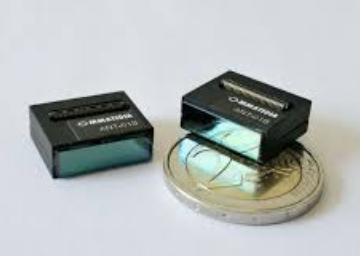The Role of Laser Displacement Sensors in Precision Measurement
laser displacement sensor are an integral part of modern measurement and inspection technologies, offering high accuracy and reliability in a wide range of industrial applications. These sensors use laser light to measure the distance between the sensor and an object, providing precise data on its position, thickness, height, or surface profile. With the ability to deliver micron-level precision, laser displacement sensors have become indispensable in industries such as manufacturing, automotive, aerospace, and electronics.
What is a Laser Displacement Sensor?
A laser displacement sensor is a non-contact device that uses laser light to determine the displacement or distance between the sensor and the target object. The sensor emits a laser beam that strikes the surface of the object, and the reflected light is captured by a receiver within the sensor. The sensor calculates the distance by measuring the time it takes for the light to travel to the target and back, or by analyzing the shift in the light’s wavelength. This process allows for accurate and real-time measurements of the object’s position or surface profile.
Key Benefits of Laser Displacement Sensors
1. High Precision and Accuracy: One of the key advantages of laser displacement sensors is their ability to provide highly precise measurements. These sensors can detect minute changes in position, often with micron-level resolution. This makes them ideal for applications where even small deviations from a desired position could lead to significant problems, such as in quality control and manufacturing processes.
2. Non-Contact Measurement: Laser displacement sensors offer a non-contact measurement technique, meaning the sensor does not need to physically touch the object being measured. This feature is particularly beneficial when measuring delicate or sensitive surfaces, as it eliminates the risk of damaging the object. Additionally, non-contact measurement reduces wear and tear on the sensor, increasing its lifespan.
3. Versatility in Applications: Laser displacement sensors are highly versatile and can be used in a wide range of applications. They can measure objects with varying sizes, shapes, and materials, including metals, plastics, and even transparent surfaces like glass. The sensors can also be used in high-speed production lines, where rapid and continuous measurements are essential.
4. Fast Response Time: Laser displacement sensors offer quick response times, enabling real-time monitoring of changes in position or surface height. This capability is crucial in high-speed manufacturing environments where fast adjustments are needed to maintain product quality and precision.
5. Enhanced Durability: These sensors are designed to perform well in harsh environments. Many models are built to withstand extreme temperatures, vibration, and exposure to dust or moisture, making them suitable for use in a variety of industrial settings.
Applications of Laser Displacement Sensors
1. Quality Control in Manufacturing: In manufacturing, laser displacement sensors are commonly used for quality control purposes. These sensors can measure the dimensions of components and products during production, ensuring they meet the required specifications. Whether measuring the thickness of a sheet metal or the height of a component, laser displacement sensors provide accurate and reliable data to ensure that products meet the highest standards of quality.
2. Automotive Industry: Laser displacement sensors play a vital role in the automotive industry, where precision measurement is critical. They are used to inspect parts during production, measure the thickness of materials, and monitor the assembly process. These sensors help ensure that automotive components fit together accurately and meet safety standards.
3. Electronics and Semiconductor Manufacturing: In electronics and semiconductor manufacturing, laser displacement sensors are used for wafer measurement, surface profiling, and the inspection of small, intricate parts. The precision of these sensors makes them well-suited for industries where minute variations can lead to defects or malfunctions in the final product.
4. Aerospace and Defense: Laser displacement sensors are also used in the aerospace and defense sectors for measuring critical components like turbine blades, aircraft fuselages, and missile parts. These sensors provide the high precision required in these industries to ensure that every part meets rigorous performance and safety standards.
5. Material Handling and Robotics: In material handling and robotic systems, laser displacement sensors are used to monitor the position of objects and ensure that they are accurately placed or moved. The sensors can help guide robotic arms or automated systems in picking, placing, or sorting items with great accuracy, improving overall efficiency in production lines.
Conclusion
Laser displacement sensors have become an indispensable tool for industries that require precise, non-contact measurement solutions. With their ability to provide high accuracy, fast response times, and versatility in a wide range of applications, these sensors help improve product quality, streamline manufacturing processes, and enhance operational efficiency. As industries continue to advance and demand higher levels of precision, laser displacement sensors will remain a critical component in the quest for innovation and excellence in measurement technology.

